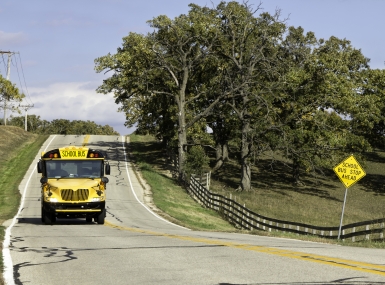Share
Line: | @NACoTweets: Supreme Court won't hear Utah case on county right-of-way on federal lands |
The Supreme Court has rejected pleas to take up a case surrounding claims to Utah roads that cut across federal lands, a move that could have broad implications for ongoing disputes in the West.
In a customary short order issued Oct. 13, the high court denied petitions from the state of Utah and Kane County — which lies along the state’s southern border — to hear their appeal on a case centering on the county’s rights-of-way claims made under an obscure Civil War-era law.
A federal appeals court last year scaled back the scope of the county’s right-of-way claims to roads on federally-owned land, finding that a lower court had erred in part of its decision awarding the county access to 12 of 15 roads it claimed under the 1866 law known as R.S. 2477.
That law was enacted to allow state and county highways to be constructed over federal lands in the West. Congress repealed the law in 1976, but it said rights in place before that repeal must be honored.
In the decision last year from the Denver-based 10th U.S. Circuit Court of Appeals, the judges said the lower court did not have jurisdiction over six of the roads it awarded to Kane County because there was no “disputed title” necessary to involve the federal courts
That decision will have ramifications for the state’s broader claims over some 12,000 roads, attorneys for Utah said in their petition to the Supreme Court. “This case seeks to resolve disputed title ownership to historic highways forged by those who long ago traveled West to establish homes and livelihoods,” they said, “and that even today remain essential to state and local economies.”
The 10th Circuit’s decision, Utah’s petition says, put states and others seeking rights of way in a legal “no man’s land,” preventing county improvement and state maintenance of roads.
Attorneys for the Obama administration had urged the high court not to take on the case.
Conservation groups have fought state and county claims to some of the routes in question.
“Lots of these claims are in sensitive places, so having these federal agencies in charge of time, place, manner of any improvements of these routes is important,” said Steve Bloch, an attorney at the Southern Utah Wilderness Alliance, which has opposed state claims in a number of lawsuits.
And Utah isn’t the only state where these fights are occurring, Bloch said. “It’s playing out in some other states like Alaska, Idaho, Colorado and New Mexico,” he said.
States and counties could use their right-of-way claims to improve and widen routes including what are now unmaintained dirt tracks or stream bottoms in areas like national parks or wilderness areas, Bloch added.
Some of the roads Kane County has claimed, for example, run through the Grand Staircase- Escalante National Monument.
Reprinted from Greenwire with permission from Environment & Energy Publishing, LLC. www.eenews.net. 202.628.6500


